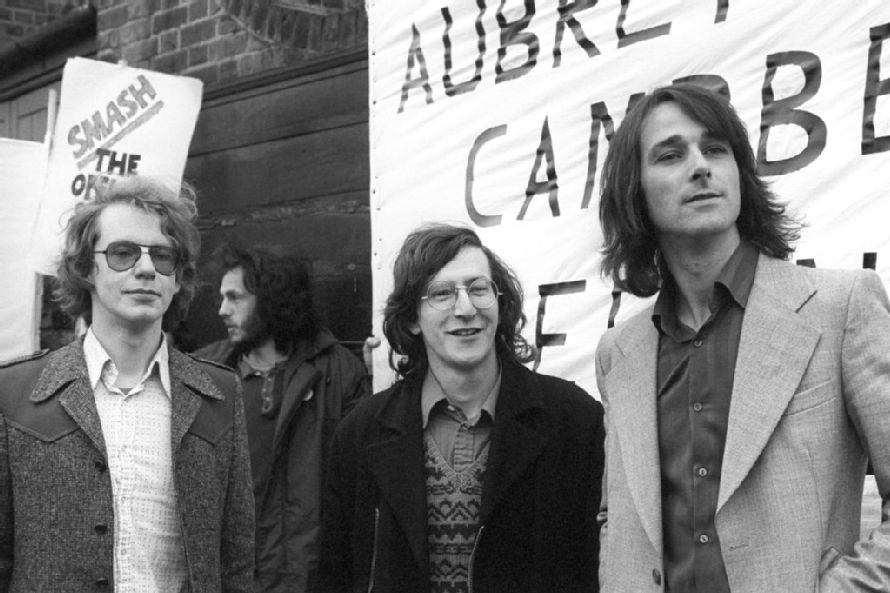 Friday 3rd November 2017 Arnolfini, Bristol 7.00 - 9.00pm (Networking & Drinks from 6.00pm) Every post-war generation has had its own whistleblower who has tried to expose the extent to which governments monitor public communications. For the 1970s it was the ABC trial. This shone a light on the darker corners of state surveillance and sparked a ferocious attempt by the government to criminalise journalists. At this special event, hear from those involved and the contemporary relevance in our post-Snowden world. This unique panel discussion will look at the events from those involved and consider how much has really changed and the threats to journalists and whistleblowers today. Background to the Event This event marks 40 years since the joint arrests of Crispin Aubrey, John Berry and Duncan Campbell. In the early seventies, Crispin Aubrey became a leading figure in the campaign to prevent the government deporting two Americans on national security grounds - former CIA case officer Philip Agee and Time Out journalist Mark Hosenball - after Phillip Agee had exposed CIA malpractices and Hosenball and Duncan Campbell co-wrote the first ever article on the GCHQ intelligence agency. Then, whilst researching an article for Time Out to expose British government secrets, he was arrested with Duncan Campbell under the Official Secrets Act for receiving classified information from John Berry, a former signals intelligence operator. Crispin Aubrey, John Berry and Duncan Campbell appeared in court in what was known as the ABC trial (an acronym of their surnames). The ABC case attracted huge public interest as the government mounted a prosecution by turns farcical and ferocious. The case became notorious for a number of reasons, including jury vetting after the defence discovered that the jury foreman was a former SAS officer and that two other jurors had signed the official secrets act, as well as the prosecution of journalists under section 1 of the Official Secrets Act. The trial revealed much about government surveillance and also the lengths it would go to keep its activities secret. Following the trial, Crispin wrote the book Who’s Watching You: Britain's Security Service and the Official Secrets Act (1981). In 2012, Crispin Aubrey sadly passed away and this event has been organised by his family as part of the Crispin Aubrey Legacy Fund set up to support aspiring journalists and in conjunction with the University of West of England's Film and Journalism Department and Bristol Festival of Ideas. Event Format 18.00 - 19.00 Drinks and networking 19.00 Opening address from the Crispin Aubrey Legacy Fund 19.10 Panel Discussion One : Reflections from the trial and campaign Chaired by Andrew Kelly, Bristol Festival of Ideas ABC defendant, John Berry Sue Aubrey, wife of ABC defendant, Crispin Aubrey 20.00 Panel Discussion Two: Lessons from the trial and legacy today ABC campaigner and Statewatch Director Tony Bunyan Sarah Kavanagh, NUJ Senior Campaigns and communications officer ABC defendant, Duncan Campbell Entry - to register for the event please click here. There is a suggested £5 donation (to be paid on the door) to the Crispin Aubrey Legacy Fund. @CrispinLegacy #ABC40 For more information about the trial and this event download the background reading material below.
1 Comment
Emma StanfieldCrispin Aubrey Legacy Fund 2016 BA Scholar As my friends and family know, I have always been extremely career driven. At the tender age of ten I was ordering every university in the county’s prospectus’ to my family home, dreaming of a successful career. After completing an eye-opening internship in my first year, I was determined to get more experience under my belt.
Whilst I am terribly lucky to have had such a worthwhile first internship at an amazing beauty and lifestyle agency, and forever grateful, it really put my aspirations into perspective. I learnt I wanted to develop a career in a cause more worthwhile of my time; the environment. Luckily for me, I learnt of a volunteering opportunity going in the Soil Association’s press office from a fellow student. A few phone calls and emails later, and it was in the bag. With this week being my last, I have recognised considerable differences in myself – as a student and as a person. My first day started with a surprising lie-in in comparison to my university wake-up call, with still enough time to avoid having to frantically run to catch the bus. Arriving five minutes earlier than told, I was keen to make a good first impression on team – and I think it worked. Despite one of the press office managers telling me they were juggling a few volunteers over April, I was the only one in that day which made it slightly less daunting. After being introduced to the team, greeted with a bar of Green & Blacks and briefed on the all things organic, I got cracking with measuring the organisations coverage for the day and distributing it out to the necessary teams. Whilst I knew measuring coverage was the backbone of public relations, it was interesting to be able to use new tools I had not been exposed to before in a real-life situation. After refueling on a Bearrito, I focused on the creative side of press office duties, summarising some key organic and environmental stories for their weekly newsletter before returning home. In my first week, I expressed my eagerness to be part of some pitching as this is one practical element of PR that we don’t experience at university. As this is quite an important task, I didn’t think I would be allowed to phone journalists so soon into my time with the Soil Association, but the team were very encouraging for me to get involved. So much so that they thought it would be an insightful for me to follow a story from searching for relevant contacts, to writing the press release, to getting it published. Whilst the local story was far from going global, I was over the moon when my journalist phone conversation led to the story becoming a nib in local London paper. Whilst I had heard about the rush practitioners get, it was hard to relate from the 4 corners of a classroom, however, the press office was just as proud as I was of my mini accomplishment. My third week happened to be the week before the launch of the Soil Associations latest greenwashing within the beauty industry campaign, and the whole press office seemed to be in overdrive. Amongst my usual routine of measuring coverage and writing about important news stories for their weekly Organic News, I was asked to help compile a list of all the press contacts we could pitch to on the day of the launch. Whilst this job doesn’t sound super exciting, I quite enjoyed searching for important media contacts knowing that on launch day, I could be pitching to any one of them. And finally, Campaign for Clarity’s launch day was finally here. It was far less hectic than I originally anticipated, and after an informal meeting with the team, my anxiety was put at ease. Armed with all the information I could possibly need and some Pukka mint tea (a bonus of working for an organic NGO I will miss terribly), I was ready to get pitching to the mass media. And it didn’t go too badly either. There were some curve-ball questions thrown at me, and some uninterested receptionists, but other than that the experience was positive and thrilling. Rhys Buchanan was awarded a CALF scholarship in 2015, he has a background in music journalism and is passionate about fighting climate change. Rhys has been mentored by the Guardian's Online Environment editor Adam Vaughan and through the support of the fund has established his own online E-zine called The Know, which brings together is passion for social issues together with his love of music. Here Rhys tells you about The Know...
The concept The concept behind the already growing website is to act as a platform for musicians in Bristol and Portland to gain exposure internationally. I feel it’s important for the site to use it’s growing following to discuss important issues such as the struggle of local music venues as well as wider ethical and global issues. Why Bristol and Portland? Both cities are forward thinking in terms of their political values, creative and collaborative scenes and have a focus away from major destinations such as London and New York. It offers us a quirky and unusual base to start from. The benefits It offers us a starting point in two locations which means we have a much bigger reach from the get go. Subsequently this means we can access larger artists and musicians for interviews. (For example a band might be big in England but still emerging in the USA) so we could use tours to get access to them. It offers us a starting point in two locations which means we have a much bigger reach from the get go. Subsequently this means we can access larger artists and musicians for interviews. (For example a band might be big in England but still emerging in the USA) so we could use tours to get access to them. The reaction This has already been received very well amongst both scenes and with PR companies. I’ve spoken to The Bristol Post and student radio about it. We’ve had a stage at local festival Dot To Dot Bristol and acted as a judge for Glastonbury Festival Emerging Talent Competition. We’re growing at a fast rate and feel a print issue would be a key way in making The Know sustainable going forward through advertising. The first print issue would primarily be distributed in key cultural hubs across Bristol and some in Portland. There is the need to go large to attract advertisers so I feel like a goal of 5000 copies is important to reach. To fund this amount of 32 page magazines will cost approximately £800 through Mixam. I feel that the scholarship would really help achieve this but we could also get some advertising revenue which would lower the cost. The Crispin Aubrey Legacy Funding toward the website have been invaluable. It’s given it a professional appearance and enabled me to move it away from being a Wordpress blog to something with hosting and it’s own URL. This was vital to be taken seriously by PR companies and future advertisers. Read The Know Magazine. 2017 applications for BA Crispin Aubrey Scholarships are now open. First year undergraduate students on Journalism/Journalism & Public Relations/Media & Journalism/English & Journalism courses at the University of the West of England are eligible to apply for the Crispin Aubrey Undergraduate Scholarship. Please download the Information pack and application form here to apply. Applicants must return submissions to [email protected] by the Sunday 16th April 2017. Entries should be marked as ‘CALF Scholarship 2017’.
The rain held off to allow for a fourth successful Crispin Aubrey Legacy Fund walk to take place in Hackney on Saturday 1st October 2016.
The walk took in cultural and political sights of Hackney plotting some of Crispin’s experiences of living in the East End in the 1970s. The walk began in London Fields with a nod to Martin Amis and an appreciation of the Hothouse - built as a creative hub to nurture local creative talent (against the backdrop of high rise luxury flats) by Free Form Arts Trust, a community-led arts and regeneration organisation and contemporaries of Crispin. The walk continued with further stops at Broadway Books, which provided an opportunity to hear about Crispin’s work developing Hackney People’s Press. A pause at Elizabeth Fry’s house in Mare Street to hear about her work in prison reform for women prisoners and a stop at Hackney Town Hall to hear about Crispin’s involvement in the ABC Trials from John Berry a formal corporal in signals intelligence that was interviewed by Crispin in the 1970s while working in Time Out that led to his later prosecution under the Official Secrets Act. We would like to say a special thanks to all who joined and sent donations, we raised over £700 to support our scholarship programme. If you are interested in finding out about future events, please contact [email protected] Thanks to everyone who joined us or sent donations for our annual Crispin Aubrey Legacy Walk in Hackney yesterday. It was a fascinating and inspiring day and wonderful to reconnect with friends and supporters. More on the blog about the event soon.
CALF produces an annual newsletter to keep supporters up to date about our progress and successes. Should you wish to receive the newsletter, please contact the us at info@crispinaubrey.org to be added to our mailing list.
...But it still needs your help.
This year Glastonbury Festival will launch a host of exciting new environmental initiatives. These are aimed to reduce resource usage, emissions, wastage and more. Lucy Smith has been overseeing the green initiatives since 2008 and has grown up with the festival. We caught up with her to discuss why they’re hoping this might be the greenest year in the events rich history. The scale of Glastonbury is huge, where do you start when it comes to reducing the impact? As well as the 140,000 festival-goers, we have to consider the production aspects as well. We’ve got 40,000 crew, lories of equipment and generators which bring temporary power all onto a greenfield site. So there’s many issues with festivals which don’t make them very sustainable operations. That’s why we look at every aspect of it possible as a team. The festival always encourages people to be sustainable before they even arrive… Absolutely. We’re lucky because our website is a very strong tool for us. As Glastonbury starts approaching it nearly has a million people going through the page. This means we’ve got a very captive audience so we can get any messages we want to get out before the event. This varies from environmental matters such as what they bring, how they travel, how they behave on-site and also how they leave. We keep up that communication because our audience is very receptive. So what are Glastonbury’s biggest environmental challenges? Minimising waste is a massive one for us because obviously that many people generate a lot of it. Our first mission was to introduce the stainless steel water bottle and re-fillable kiosks, this encouraged people to use our bottles or to bring a re-usable one to the site. It’s about avoiding bottled water which means reducing the plastic waste dramatically. We really try to highlight single-use waste to our audience as it’s not just about the festival, we also want to influence behaviour in the outside world. Our message to festival-goers is to take what they bring with them and don’t leave it on the farm. Hasn’t the stainless steel cup has been rolled-out for the first time this year? Yes, this is aimed to reduce the cardboard cups and we’re hoping it will really reduce our waste figures. These will be in the bars at The Park. That’s a really big thing because in the past people serve a pint and then they don’t ever see the cup again. It’s a very different practice for the bar operators, so it’s exciting but also quite scary. If you buy a cider, ale or lager in a pint cup, it will be exclusively in a stainless steel cup. It’ll be very different to see the area without a load of pint cups all over the floor as well. It’s lovely that they’re British stainless steel as well… Exactly, and we’re very proud of that. There’s a high percentage of recycled stainless steel in it. In terms of its life-cycle, it’s infinitely more than plastic. When plastic comes to the end of its life, if it gets recycled it just ends up as another low-grade product. This on the other hand gets melted down and never decreases in quality. They’re great. Is there anything new on the site this year that will help you guys? When people bought their tickets they had to tick a box to say they signed up to our pledge. This is about using the bins, taking home their belongings and not peeing on the ground. Alongside that we’ve introduced something called ‘Worthy Warriors’ which is about encouraging campers to support our stewards. It’s about loving the farm and leaving no trace. This way we can hold people accountable because they’re actually signing up to a document. There’s enough Glastonbury goers who really do care. So there’s a few things we’re rolling out which could become more prominent in the future. Tell us about how public transport aids the reduction of CO2? We’ve gained some really good ground with this after a lot of hard work. We’re increasing the figures in terms of compulsory public transport tickets. We’re working on making this a positive experience to make sure these people get priority for their efforts. Through a green travellers scheme, they get discounts and other perks as way of encouragement. Coach tickets also go on-sale first so it’s for people who actually want them rather than those buying them in a panicked state. What would be your main message to festival attendees this year? The big message is to use the loos and not be tempted to urinate wherever they feel the need to go. The other main on is to love the farm and leave no trace. With more environmental measures implemented every year, how does this reflect in statistics? We’re introducing many more things this year such as the cups so we’re minimising a major waste-stream. There will be some big dents in those figures this year. Also with the extra festival-goer awareness schemes, we think that there’s going to be less equipment leftover. We would hope with these initiatives that this will be the best year ever in terms of these figures. What’s the most rewarding part of your job? It must be quite stressful at times… With my job there’s a lot of organisation pre-festival. It’s quite hard when you get all the ticket holders on-site so I personally find the event quite hard. It can feel like a disaster if you see a single bin overflowing. So you can have a lot of good intentions but sometimes when it’s in full-swing, people can have the best intentions in the world and things can go out the window. Festival goers really need to be environmentally conscious. Glastonbury Festival takes place from June 22nd - June 26, 2016. We’ll be in our usual field with plenty of exciting events happening. Blog by CALF Scholar, Rhys Buchanan, Courtesy of Greenpeace Greenwire CALF produces an annual newsletter to keep supporters up to date about our progress and successes. Should you wish to receive the newsletter, please contact the us at info@crispinaubrey.org to be added to our mailing list.
Images Courtesy of Ian Shaw Children and adults of all ages gathered under the big walnut tree at Hockpitt Farm to start the third Crispin Aubrey Legacy Fund (CALF) Memorial Walk. We all braved the rain to ramble into the Quantocks. We walked along watery lane before heading up hill to Walfords' Gibbet.
We looked out on the beautiful north Somerset coast line and learnt from local marine ecologist Nigel Phillips about the wide variety of fish and crustaceans that live along our local coastline from Bridgwater Bay to the shores of Pollock Weir. As well as hearing about the impact Hinkley Point power station has on fish stocks. The use of sea water to cool the reactors results in the death of millions of live fish, as well as fish eggs annually. We continued up towards Dead Woman’s Ditch before following the path down hill again to explore ‘frost cracks’ in the indigenous oak forest with Louis Pearson who taught us that they are the perfect habitat for bats and learnt that the Quantocks are home to 8 species of bat. We used a specially designed video camera to search for bats and discovered a family of woodlice! We followed the treeline back down the hill where Crispin’s grandchildren, who had clearly put a lot of effort into their presentation, delivered an amazing speech about fair trade and the importance of preserving our forests. Please remember to look for the Fair Trade symbol and Rainforest alliance logo when shopping. Finally we braved the downpour to return to Hockpitt Farm and heard from Toby Cann and Lauren Wilce about deep ecology and our interconnectedness to the environment that surrounds us. By Kate and Jonah Aubrey-Johnson |
|||||||||||||||||||
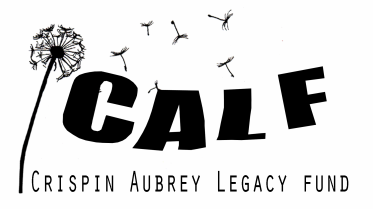
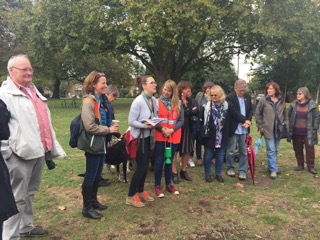
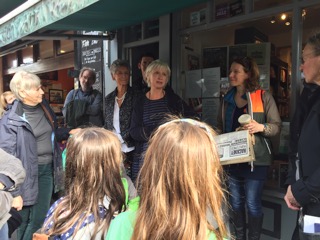
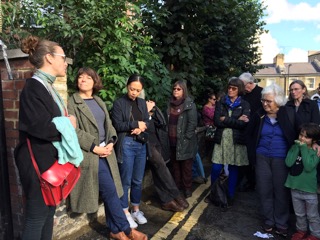
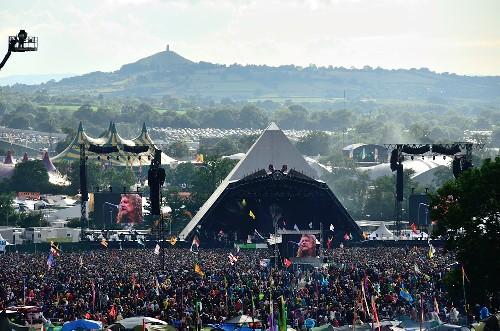
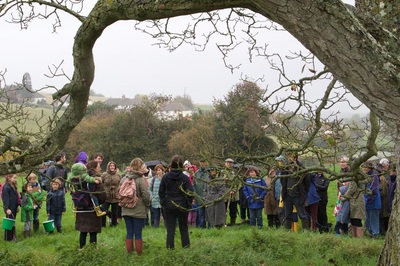
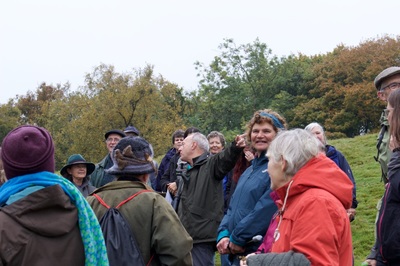
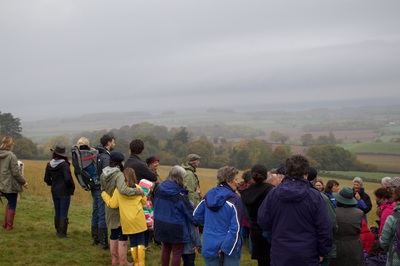
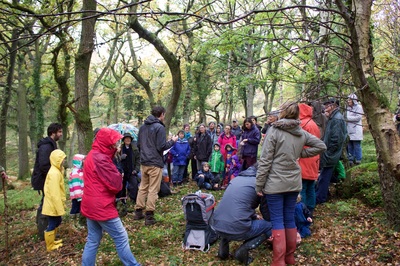
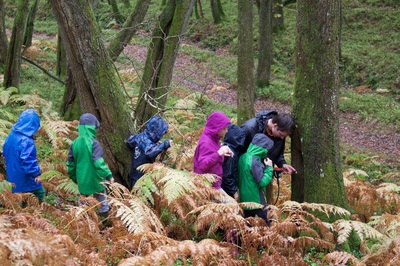

 RSS Feed
RSS Feed
